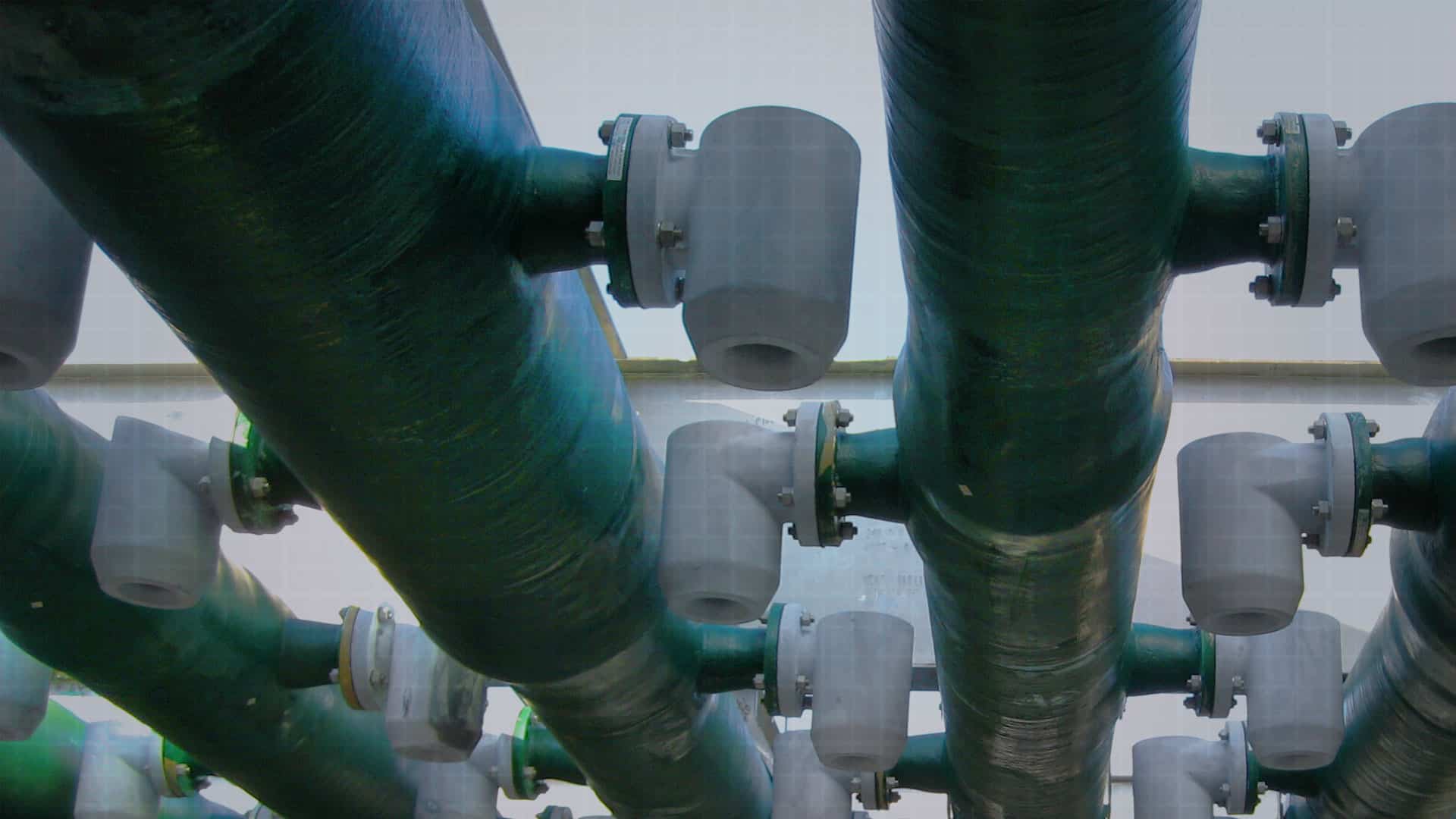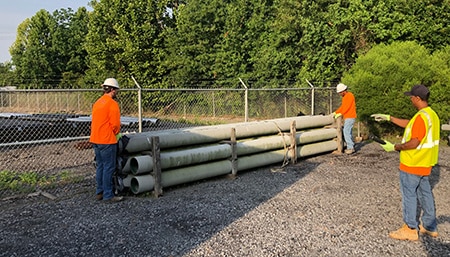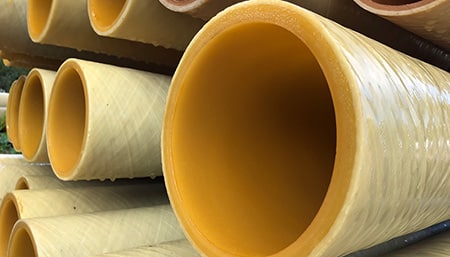For FGD wet spray tower headers, mist eliminator wash piping, and similar environments
Submittal Documents and relevant links
Click on each link below to learn more, download the bundle, or download the AutoCAD file (email required).
Coal-fired power plants produce boiler flue gases which must be scrubbed of chemicals and abrasive particulate before exiting through the stack. The interior and exterior corrosion barriers in our FRP headers are virtually unaffected by the acid and high chloride environment inside a flue gas desulphurization tower that eats away at metallic piping. ASTM D5421 and ASTM D6041 compliant.


Composite tanks, vessels, and piping systems, both fiberglass reinforced plastic (FRP) and dual laminate (FRP with a thermoplastic liner) stand out as superior choices over many other construction materials including rubber lined carbon steel (RLCS), stainless steel (SS), alloys, and thermoplastics due to a combination of advantageous features and properties.
One of the primary benefits of composite piping is its exceptional resistance to corrosion. This makes it particularly valuable in industries where exposure to corrosive substances is common, such as chemical processing, power generation, and mineral processing. FRP and dual laminates are suitable for a wide range of process streams including hydrochloric acid, sulfuric acid, phosphoric acid, chlorine gas (wet and dry), chlorine dioxide, sodium hydroxide, sodium hypochlorite, solvent extraction solutions, brines, slurries, and more. In addition to the interior corrosion barrier, the exterior FRP shell is also corrosion-resistant, making it the material of choice in corrosive atmospheric conditions.
FRP piping systems offer an outstanding strength-to-weight ratio, combining strength and durability with a lightweight structure. Compared to materials like steel or concrete, FRP is significantly lighter, making it easier to transport, handle, install, and support. Lighter equipment could mean lower installation and maintenance costs.

FRP and dual laminate piping and tank liners typically feature a smooth interior surface. This smoothness minimizes friction and prevents the accumulation of deposits or scaling, which can lead to improved flow efficiency and reduced maintenance needs.
In addition to these features, FRP is a non-conductive material, making it suitable for applications where electrical conductivity is a concern. Composite piping is also highly customizable. It can be tailored to meet specific project requirements, including diameter, length, and special features like insulation, fire resistance, and abrasion resistance.
Low thermal conductivity is another benefit of FRP. It is most desirable in applications where maintaining temperature control or insulation is essential.
Thanks to its inherent resistance to corrosion and its long-term durability, FRP piping typically requires minimal maintenance compared to RLCS, SS, and alloys, which require regular, scheduled cleaning and coating to maintain corrosion resistance. While the initial cost may be higher than some other materials, the long-term advantages of FRP and dual laminate piping, i.e., reduced maintenance, longer service life, and corrosion resistance, along with the total cost of ownership, can make it the better choice for your operation.
Ultimately, the suitability of FRP piping depends on the specific application and environmental conditions. Careful consideration of project requirements and constraints is essential. Proper design, installation, and maintenance practices are also crucial to realizing the full benefits of FRP and dual laminate piping.
For a more thorough comparison of dual laminate and lined steel, please take a look at our technical bulletin.
To learn more about our different lines of composite piping and tanks, see our Products Overview page.
The following resources will help you choose the piping system that provides the performance you want without paying for more than you need.
RPS Field Service teams can install, refurbish, or maintain your AA-Series piping system. Or, if you have minimal repairs, we can supply our A30-30 trowelable epoxy-enhanced abrasion resistant paste that can be applied in high wear areas, or used as an easy way to repair local erosion.
Click on each link below to learn more, download the bundle, or download the AutoCAD file (email required).
Let us know if our experienced team of engineers, materials professionals and field technicians can help guide your project.